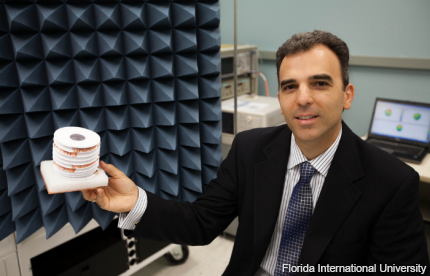A ‘powerful antenna in a soldier’s pocket,’ thanks to origami
Collapsible antennas being developed at FIU and Georgia Tech may have military and commercial applications.
Researchers at Florida International University (FIU) and Georgia Institute of Technology have been utilizing principles from the Japanese art of origami to create compact and efficient antennas and electronics.
The traditional Japanese art of paper folding, also known as origami, has provided new perspectives into the creation of complex structures that can rearrange themselves in response to electromagnetic signals. Mathematicians recently have focused on practical and theoretical questions posed by the art, according to FIU, and insights may maximize the number of shapes that can be achieved in a single folding structure. More shapes could result in different types of antennas per device and support antenna functionality.
With a $2 million grant from the National Science Foundation, the researchers envision possible applications of the technology for both military and commercial uses in communications equipment, portable medical equipment, health monitoring sensors and wireless sensors.
One of the Army’s main development goals is to lighten, or unburden the load on soldiers. Today’s soldiers carry more weight than previous generations because of the development and use of body armor, night vision equipment and extensive communications equipment, the Army has said.

FIU's Stavros Georgakopoulos displays an origami antenna.
“By using origami geometries we can reconfigure antennas to whatever shape fits our purpose,” said Stavros Georgakopoulos, assistant professor in FIU’s Department of Electrical and Computer Engineering. “These geometries offer unique advantages of collapsibility. That’s important for a number of applications, such as technology that needs to be launched in space or used on the battlefield.”
In conjunction with colleagues from Georgia Tech, Georgakopoulos has been working on the development of unique shapes that allow for ultra-broadband antennas to be compacted to a few centimeters when flat, and expanded as needed.
“A soldier will be able to carry a powerful antenna into combat folded in his back pocket,” Georgakopoulos said.
This new technology is dependent on inkjet printing to deposit miniaturized antenna circuitry and other electronics, nanostructures and dielectrics onto different materials, according to an announcement made by Georgia Tech. Metallic inks made up of conductive materials would be printed onto materials such as paper, fabrics, polymers, carbon fibers, flexible organics and ceramics.
printed onto helmets and clothes




